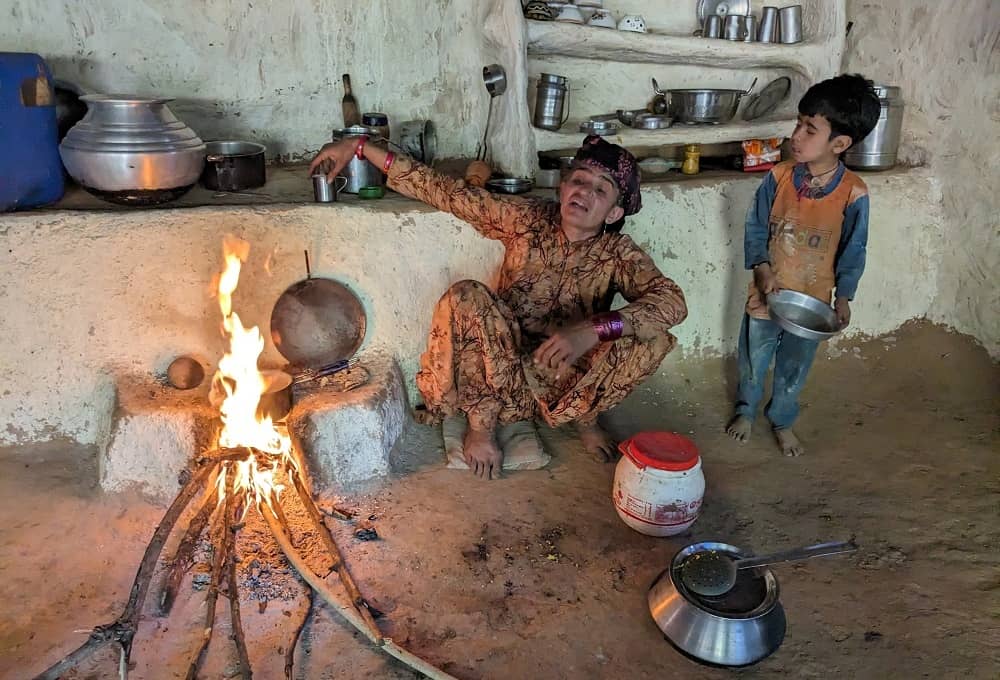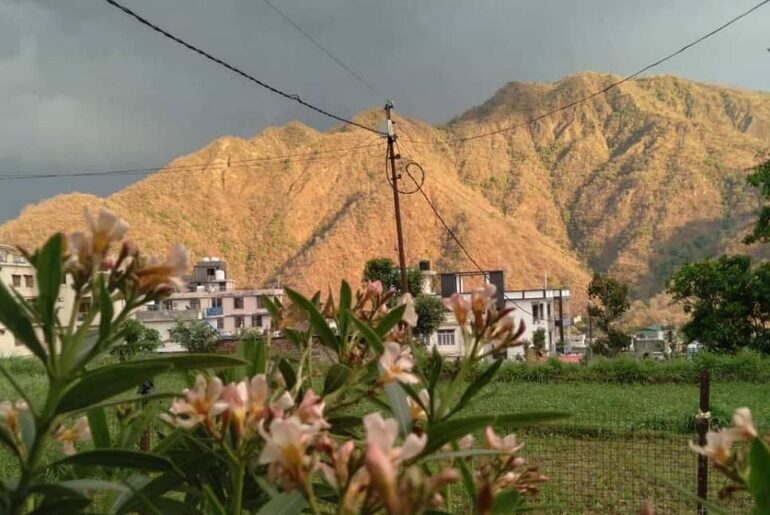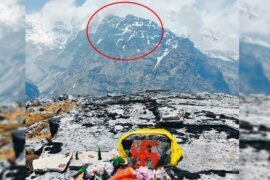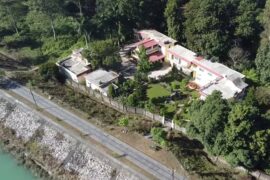Tapovan: ideal for scenic walks and insights into rural life
Tapovan offers a unique blend of nature and town, where one can experience the essence of rural life in Rishikesh, India. As India’s yoga capital, located 233 kilometers north of New Delhi, it provides an ideal setting for scenic walks that offer a deep understanding of the local community’s way of life.

Gujjar- a nomadic village
The village of Gujjar in Tapovan is home to four families who tend a small herd of cows, while Patho Village with its 40 residents cultivates a variety of crops. To reach these villages, turn off the bustling Badrinath Highway opposite the Raj Resort onto Balaknath Mandir Road. If you’re up for climbing more than 200 steps, the small temple at the top offers great views.
Tapovan Area
Balaknath Mandir, located in Tapovan, is a hub for yoga centers, ayurvedic clinics, and restaurants serving Indian, Chinese, and Israeli cuisine. The cafes and restaurants here are adorned with inspiring quotes, such as “Don’t judge each day by the harvest you reap, but by the seeds you sow” at Revival Cafe and visitors can even try their hand at painting at Kailas Art Cafe. Ira’s Kitchen & Tea Room is one of the many dining options available in the area, offering a variety of delicious dishes.
Further up the road is Motley a shop with clothes, bags, incense, perfumes, and jewelry – a motley collection of crafts and eatables – hence the name. Atal Kuksal once a hotelier wanted to provide something different and strike a work-life balance. The shop opens between 1 pm and 6 pm leaving him with time to spend with his family and with God. A deeply religious man he has a small altar on the premises and tells his customers about his guru Neem Karoli Baba.

Om Homestay
Just before Motley, there is a small private road that leads to Om Homestay, a villa-style house where Om and Anju host guests in spacious rooms with attached bathrooms and serve delicious vegetarian meals. The couple, along with their two children Sidhart and Tushita, relocated to Rishikesh from Varanasi in search of a better life, free from the caste system’s limitations. They built the four-bedroom house specifically to cater to tourists. Om also runs Rishikesh Day Tour and organizes sightseeing trips to temples and holy places, as well as leading half-day and full-day treks..

Patho Village
The treks to Gujjar and Patho Village are half-day excursions through the forest behind his house – home to monkeys and panthers. As they rise above Rishikesh the narrow tracks, which require a guide as the path is not always obvious, provide spectacular views of the Ganges and even Haridwar, a large town 22 kilometers away.
Forty people live in Patho Village which has been around for 400 years but during the day only the old and the very young are at home. The others have gone to the town to work. They either walk or go on a scooter. There is no road for vehicles. The children go to school on foot.
The crops, some sold at the market and others kept for the villager’s own use include maize, ginger, potatoes, onion, garlic, radishes, mustard, finger millet, wheat, rice, tomatoes, pumpkins, mango, lemons, red chill’s and turmeric. Cows, chickens, and goats also make an appearance.
Parvati (85) gives visitors an amazing smile as she sits on the steps of her modest house. The villagers love having their photo taken and are happy to serve tea for which a small donation is always gratefully received. While Patho is a well-to-do village with idyllic concrete homes in a scenic setting Gujjar is poor with only four families looking after a small herd of cows. The problem in Gujjan is a lack of water which makes growing crops impossible.
Gujjar Village
Bibi (36) the mother of six children sells milk in Rishikesh. A strong woman she has no trouble carrying 10kilo containers up and down the trek. The money from the sale of the milk is the family’s only source of income but Bibi and her husband Husan, who enjoys a cigarette with visitors, are content with their simple life in a wooden hut with a straw thatched roof. Water is boiled over a roaring fire, the cows are fed on a variety of leaves outside the door of the hut and the proud parents listen intently as their children tell them about their day at school.
Trek to Patho village
The trek to Patho Village is an 8km round trip with a well-defined track on the way down. A round trip is not possible with Gujjar and care has to be taken on the trek strewn with small loose stones. Men and women in colorful attire walk quickly past the tourists with welcoming smiles.
Both treks end on the asphalt Balaknath Mandir Road with its tent camps and adventure holiday accommodation. The asphalt comes to an end at a waterfall where the locals take a dip. “Expect the unexpected when in the Himalayas,” Om advises.




Comments are closed.